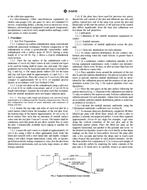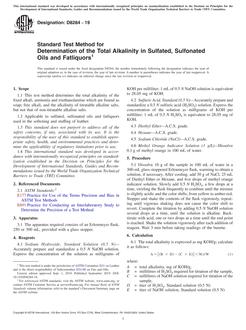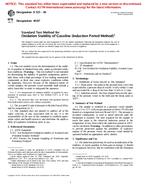1.1 This test method provides a basic procedure for evaluating the tensile strength properties of the net section of finished metal connector plates.
1.2 This test method serves as a basis for determining the comparative performance of different types and sizes of metal connector plates in tension.
1.3 A companion test method, Test Method E767, covers the performances tests on these plates in shear.
1.4 Method
Note 1-The maximum design load in tension, an indication of the effectiveness of the net cross section of the perforated metal connector plate, is not necessarily a criterion of the effectiveness of the plate in transmitting the load from wood member to wood member, since that property is influenced by a number of factors, including the effectiveness of the nails or that of the integral plate projections, or a combination thereof, used in the wood species under consideration, and tested in accordance with Method D1761.
1.5 This test method does not provide for the corrosion testing of metal connector plates exposed to long-term adverse environmental conditions where plate deterioration occurs as a result of exposure. Under such conditions, special provisions shall be introduced for the testing for corrosion resistance.
1.6 This standard does not purport to address all of the safety problems, if any, associated with its use. It is the responsibility of the user of this standard to establish appropriate safety and health practices and determine the applicability of regulatory limitations prior to use.
Product Details
- Published:
- 02/10/1997
- Number of Pages:
- 6
- File Size:
- 1 file , 83 KB


